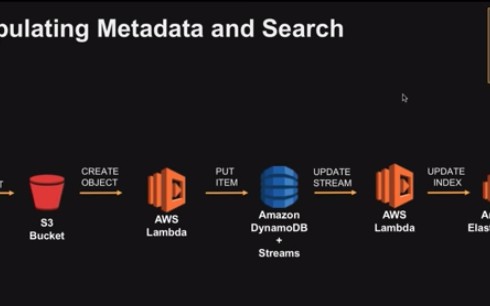

For example, they may copy the product catalog data stored in their database to their search service in order to make it easier to look through their product catalog and offload the search queries from the database.Īs data in these data lakes and purpose-built stores continues to grow, it becomes harder to move all this data around.

For example, they copy query results for sales of products in a given region from their data warehouse into their data lake to run product recommendation algorithms against a larger data set using ML.įinally, in other situations, customers want to move data from one purpose-built data store to another: around-the-perimeter. Similarly, customers also move data in the other direction: from the outside-in. We think of this concept as inside-out data movement. For instance, clickstream data from web applications can be collected directly in a data lake and a portion of that data can be moved out to a data warehouse for daily reporting. To get the most from their data lakes and these purpose-built stores, customers need to move data between these systems easily. A one-size-fits-all approach to data analytics no longer works because it inevitably leads to compromises. Examples of such data stores include data warehouses-to get quick results for complex queries on structured data-and technologies like Elasticsearch and OpenSearch-to quickly search and analyze log data to monitor the health of production systems. These same companies also store data in purpose-built data stores for the performance, scale, and cost advantages they provide for specific use cases. To analyze these vast amounts of data, many companies are moving all their data from various silos into a single location, often called a data lake, to perform analytics and machine learning (ML). As a result, we’re seeing an acceleration in customers looking to modernize their data and analytics infrastructure by moving to the cloud. Traditional on-premises data analytics solutions can’t handle this approach because they don’t scale well enough and are too expensive. Such agility requires that they integrate terabytes to petabytes and sometimes exabytes of data that were previously siloed in order to get a complete view of their customers and business operations. Across the board, I see organizations looking to use their data to make better decisions quickly as changes occur. Some are focusing on driving greater efficiency in their operations and others are experiencing a massive amount of growth. Every customer I’ve spoken to this year has had to do things differently because of the pandemic. 2020 has reminded us of the need to be agile in the face of constant and sudden change. ContactĬhEMBL - Data Lakehouse Ready was accessed on DATE from. See all datasets managed by Amazon Web Services. We try to keep it updated to every odd version.

New ChEMBL releases occur sporadically the most up to date information on ChEMBL releases can be found here.
Aws data lakehouse install#
Follow the documentation for install instructions (< 2 minute install). This representation of ChEMBL is stored in Parquet format and most easily utilized through Amazon Athena. It brings together chemical, bioactivity and genomic data to aid the translation of genomic information into effective new drugs.

ChEMBL is a manually curated database of bioactive molecules with drug-like properties.


 0 kommentar(er)
0 kommentar(er)
